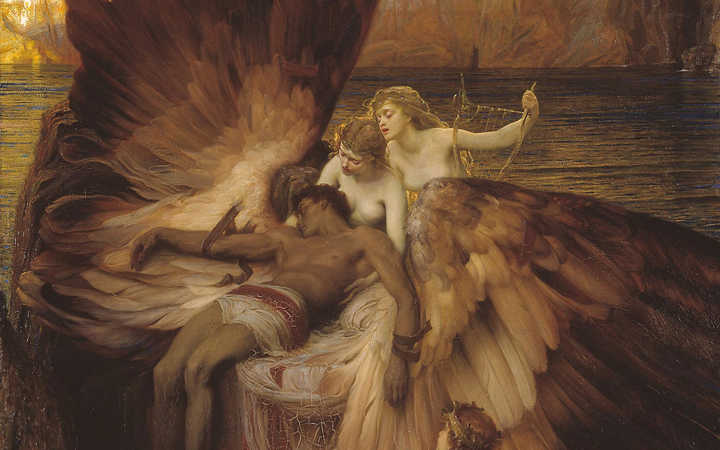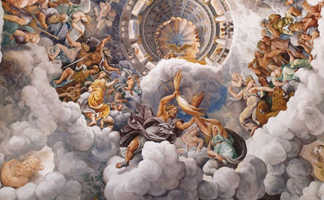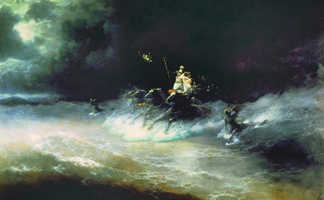The expression “He flew too close to the sun” has worked its way into common usage in modern English to describe, usually, the crashing and burning of meteoric careers with their sudden, steep takeoffs, short, sustained apogees, and then equally sudden downfalls into tragedy.
It’s been used to describe rock stars destroyed by drug use (Janis Joplin, Jimi Hendrix, Jim Morrison), movie stars who were too “out there” for their own good (James Dean, Marilyn Monroe, River Phoenix), self-destructive authors (Ernest Hemingway, F. Scott Fitzgerald, Sylvia Plath), and many other otherwise successful people who left this earth far too soon.
But what about the original story of someone who literally flew too close to the sun? That would be Icarus, whose downfall has been a cautionary tale to the rest of us for millennia.
The story begins with Daedalus, father of Icarus. Daedalus was the most renowned sculptor of his day. Plato wrote that Socrates once implied that the sculptures of Daedalus were so lifelike that if one did not tie them down, they would run away.
However, Daedalus also had a dark side. Earlier in his life, according to Ovid, Daedalus was a leading citizen of Athens thanks to his talents as a sculptor. His sister sent her son, Talos, to study under him. A problem developed when it became apparent that Talos was more talented than his uncle. Daedalus handled that problem by throwing Talos off a cliff.
However, Athena saw what was happening, took pity on the innocent young man, and transformed him into a perdix (partridge), which was his mother’s name.
Daedalus was tried for his crime and exiled from Athens. He ended up in Knossos, where his fame grew as not only a sculptor, but also as an inventor and architect.
The Roman natural historian Pliny, who himself met an untimely end with the eruption of Vesuvius in 79 AD, credits Daedalus with the invention of carpentry and tools associated with that trade. He was supposed to have fashioned sails and masts for the fleet of King Minos of Knossos.
His most famous architectural work, however, was the labyrinth he built for King Minos to keep the world safe from the Minotaur, which was the offspring of Minos’ wife and a snow-white bull sent to Minos from Poseidon to be sacrificed to Poseidon. Minos, however, was so taken with the bull’s beauty that he kept it instead. This displeased Poseidon. So he caused the wife of Minos to fall in love with it.
The product of their union, the ghastly half-bull, half-man Minotaur, a dangerous, bloodthirsty monster, had to be controlled, which is where Daedalus came in. He designed an ingenious labyrinth which was so complex that the Minotaur could not find his way out.
In the meantime, Androgeos, a son of King Minos, was killed by the Athenians. As retribution Minos imposed a sort of human tax on Athens: every ninth year, (or every year, depending on which version of the story is being told), Athens had to choose 14 young people, 7 each of men and women, to be shipped down to Knossos and be devoured by the Minotaur.
It didn’t take long for the Athenians to get fed up with this arrangement. Athens was an ascending power, but not yet strong enough to challenge the Minoans militarily, so they opted to outsmart Minos. The Greek hero Theseus therefore volunteered to go.
Theseus didn’t have a specific plan, but that problem resolved itself when Ariadne, the daughter of Minos, saw Theseus amongst the youth being paraded from their ship, and fell in love instantly. Ariadne went to Daedalus, who told her how Theseus could escape the labyrinth after killing the Minotaur: he provided her with a ball of string, and instructed her to tell Theseus to unwind the string as he and his companions ventured ever deeper into the labyrinth. She also gave Theseus a sword, which he used to dispatch the Minotaur and free his companions, after which Theseus eloped with Ariadne, abandoning her on the island of Naxos.
According to Ovid, a furious Minos, discovering Daedalus’ betrayal, locked up both Daedalus and his son, Icarus, into a tower prison overlooking the sea. (Other versions have Minos imprisoning Daedalus in the labyrinth.)
According to Ovid, Daedalus set about doing what he did best: inventing a way out of the prison. He studied the flight of birds from his tower, and fashioned wings for himself and Icarus using feathers, wax and string.
Daedalus demonstrated the wings to Icarus, and instructed him in their use:
“Let me warn you, Icarus, to take the middle way, in case the moisture weighs down your wings, if you fly too low, or if you go too high, the sun scorches them. Travel between the extremes. And I order you not to aim towards Bootes, the Herdsman, or Helice, the Great Bear, or towards the drawn sword of Orion: take the course I show you!” (Ovid’s Metamorphoses)
Daedalus and Icarus then flew from the tower, thus beating the Wright Brothers’ accomplishment of manned flight by some thousands of years. They flew northeast, towards the island of Samos. That’s when Icarus in his pride decided to see how high he could go.
Higher and higher he ascended, until the sun’s heat melted the wax that held his wings together, and he plummeted into the sea and drowned.
Daedalus, heartbroken, recovered his son’s body from the sea, burying it on the island just to the west of Samos, which took the name of Icaria. The sea north of the two islands is called the Icarian Sea. The story adds that as Daedalus held his son in his arms and mourned his death, that a partridge landed near him and chirped in his ear.















